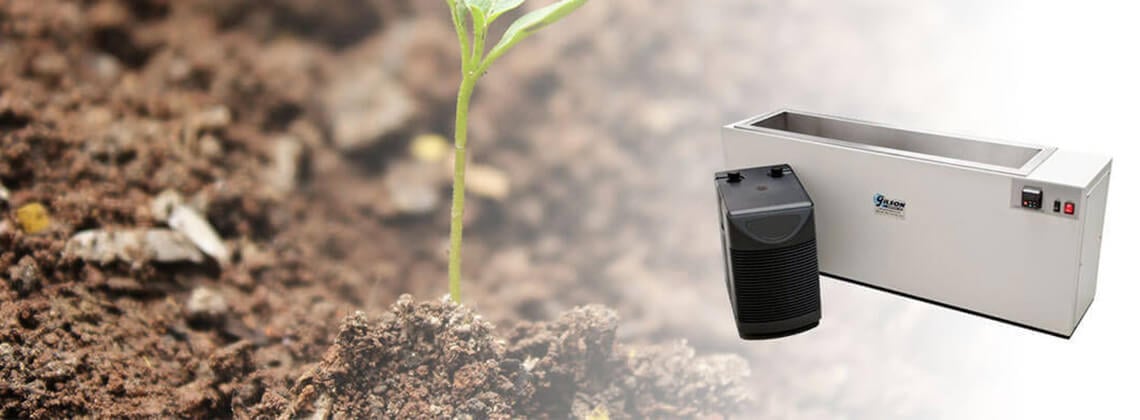There are so many factors that go into crop production – weather, seed quality, pests, and other elements can all mean the difference between a bumper crop and a famine. Perhaps the most important variable, though, is the composition of the soil in which your crops will be planted. Until it’s harvested, that soil is going to be your crops’ home; it’s where they’ll draw most of their nutrients from, and where it might be exposed to contaminants that can stunt or prohibit their growth.
Because of this, soil testing is of the utmost importance; doing so can give you a comprehensive picture of its composition and allow you to formulate a fertilization plan that will best suit your crops. Though the sampling itself is a straightforward process, there are a few things you should keep in mind to ensure that the sample you take is truly representative of your soil’s composition.
Soil Testing Tips
There’s more to soil testing and sampling than just taking a bit of dirt out of the ground and giving it a once-over; a smart farmer, for example, knows that the soil in one part of his property may be completely different from the soil found in another. By following the below guidelines, you’ll be much more likely to take an accurate sample and thus much better prepared to meet the needs of your crops.
- Take your samples on the same day as fertilizing, within two hours of doing so if possible. If you’re using slow-release fertilizer pellets, be sure that none are contained within any of your samples. If your soil has just undergone heavy fertilization, wait two months after fertilization has occurred before taking your sample.
- If you’re growing a variety of plants, be sure to take a sample from each section dedicated to each species.
Keep Reading: Sieves for Soil: Finding the Perfect Match for Gardening.
- If you’re attempting to diagnose a problem with your crops, one sample should be from the affected area and another from an unaffected area so that a comparison can be drawn between the two.
- Samples should be taken from the root zone (typically four to six inches, though this varies by plant).
- Test soil at the same time every year so that you can draw accurate comparisons between this year’s soil and that of the years prior.
- The variety in soil composition across space makes multiple samples a necessity. A minimum of ten samples per acre is recommended.
- Hold your samples in plastic containers; the minerals present in metal containers can create inaccurate test results.
- Be as consistent as you can from year to year in your sampling practices, as even minor aberrations from your routine can cause misleading differences from the results of years prior.
Soil Sampling Method
- Gather an auger, a plastic bucket, a large sheet of paper or poster board, and the bags or containers provided to you by the lab to which the sample will be sent.
- Take your samples, following the above guidelines regarding frequency, location, depth and other factors. Make the sizes of the samples as equal as possible.
- Place the samples in your bucket and mix thoroughly, making sure to break up any lumps or cores. Muddy soil should be allowed to dry before mixing; if it is merely moist, you can mix first and then dry afterward. If you are attempting to draw comparisons between two different portions of your field, be sure to mix the samples from those portions separately.
- Spread the resulting mixture on the paper and allow to air dry. Be sure that it is not heated or exposed to fertilizer or manure during this step.
- Fill the lab-provided container or bag with the mixture to the indicated level. You can discard the rest or put it to some other use, such as adding it to a compost heap. Label and number the container holding your sample.
- The lab should provide a field and cropping information sheet for you to fill out; be sure to complete and return it along with your sample.
Finding a Lab for Soil Testing
Most soil-analyzing institutions accept samples by mail, so the only limit to the lab you choose may be based on how far you want to send your sample and how long you’re willing to wait to get it back. A simple Internet search for “soil sample lab” will give you a variety of labs from which to choose, institutions that range from university agricultural departments to for-profit businesses. Though a university’s analysis will generally be less expensive than a business, the cost of analyzing your soil will depend mainly on what you want the lab to test for. Reputable services will provide upfront pricing that includes just what each analysis package covers; don’t do business with a lab that lacks this level of transparency.
If you feel comfortable analyzing the sample on your own, you may consider browsing Certified MTP’s wide variety of soil testing equipment. Our selection of hydrometers, penetrometers, pH meters and other essential equipment can be of great use to farmers or budding biologists who wish to conduct in-house soil testing analysis.
More read: Sieve Size Chart: Understanding Mesh and Particle Sizes.
Soil Management with Testing Equipment
Soil management is one of the most important techniques a farmer can learn, and the learning of that technique can be aided tremendously by an accurate analysis of the nutrients and contaminants that can promote or stunt the growth of your crops. The cost is minuscule compared to the price of lost crops, and the task of collecting samples should be nothing to an individual used to working the land. If you have any further questions about soil testing and sampling – or about the equipment we offer that can help you conduct the analysis yourself – please feel free to get in touch with one of our friendly and knowledgeable customer service representatives.
Soil testing is a crucial practice in agriculture, environmental science, construction, and landscaping, providing comprehensive insights into the soil’s composition, fertility, and suitability for various uses. By analyzing soil samples, soil testing helps in making informed decisions about crop management, construction projects, and environmental conservation.
Key Elements of Soil Testing:
1. Nutrient Analysis: Fundamental to agricultural soil testing, it involves measuring levels of essential nutrients like nitrogen (N), phosphorus (P), potassium (K), and other micronutrients. This information guides farmers in applying the right type and amount of fertilizer, ensuring healthy crop growth and optimal yields.
2. pH Testing: Soil pH, indicating its acidity or alkalinity, significantly affects nutrient availability and microbial activity. Most plants prefer a pH range of 6.0 to 7.0. Testing pH helps in deciding if lime or sulfur amendments are needed to adjust soil pH to an optimal range.
3. Texture and Structure Analysis: Determining the soil’s texture (proportion of sand, silt, and clay) and structure influences decisions on irrigation, planting, and construction. Soil texture affects water retention, drainage, and root penetration.
4. Organic Matter Content: High organic matter improves soil structure, nutrient retention, and microbial activity. Testing for organic matter content is crucial for assessing soil health and fertility.
5. Salinity and Conductivity Tests: These tests measure the salt content in soil, which can impact plant growth. Salinity tests are particularly important in arid regions or areas using saline irrigation water.
Applications:
– Agriculture: Soil testing is indispensable for efficient crop management, helping to tailor fertilization and irrigation practices to the specific needs of the soil.
– Construction and Civil Engineering: Soil tests determine the suitability of the soil for building foundations, road construction, and other infrastructure projects.
– Environmental Assessment: Soil testing is used to monitor and remediate contaminated sites and to assess the health of natural ecosystems.
Challenges:
Soil testing requires proper sampling techniques to ensure representative samples. The variability in soil composition across a field or site can make interpretation challenging. Moreover, the accuracy of the tests depends on the quality of the laboratory procedures and equipment.
Conclusion:
Soil testing is a fundamental tool across multiple disciplines. In agriculture, it leads to more sustainable and efficient farming practices. In construction, it ensures the safety and stability of structures. And, In environmental management, it aids in preserving and restoring natural habitats. Understanding soil properties through testing is critical for decision-making in these diverse fields.

